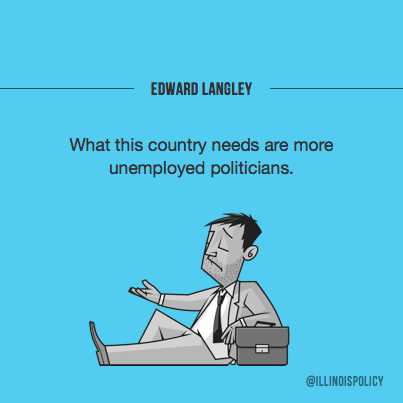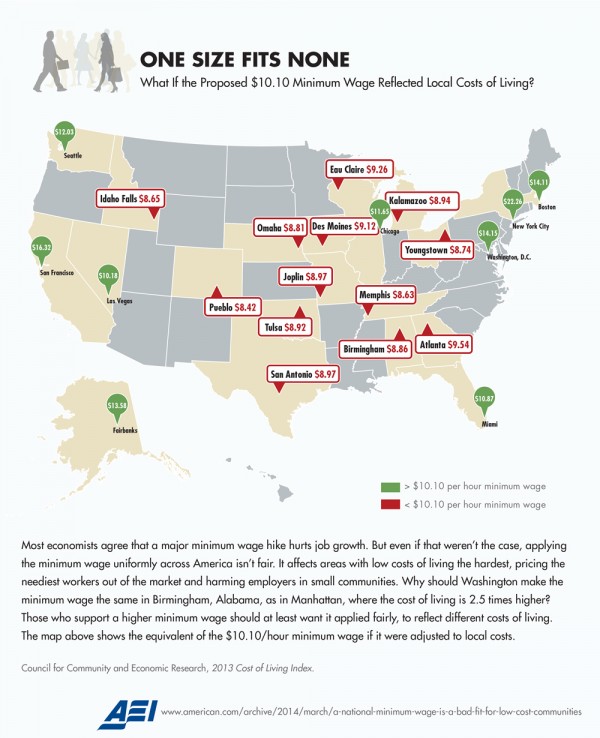QUOTE OF THE DAY
Governor Quinn: My case for making the income tax rates permanent
Feb. 24, 1997: “Illinois’ schoolchildren — and taxpayers — deserve something better than the state’s arcane, inadequate and inequitable system of paying for public education. It’s a method that relies far too heavily on property taxes, overburdening homeowners and creating huge inequities between rich and poor districts.”
April 19, 1997: “The legislature needs to establish a minimum amount guaranteed for each child to provide an adequate education. It should finance that foundation level by raising the state income tax, and then offset some of that increase with property tax relief. … What’s more, a modest increase in the state’s income tax would not be unduly burdensome, particularly when coupled with a drop in property taxes.”
Those aren’t my words. They’re the words of the Chicago Tribune Editorial Board, praising then-Gov. Jim Edgar’s thoughtful, responsible plan to change the way Illinois schools are funded by raising the income tax and reducing the property tax burden.
Chicago Tribune: Obamacare has led to health coverage for millions more people
President Obama’s healthcare law, despite a rocky rollout and determined opposition from critics, already has spurred the largest expansion in health coverage in America in half a century, national surveys and enrollment data show.
As the law’s initial enrollment period closes, at least 9.5 million previously uninsured people have gained coverage. Some have done so through marketplaces created by the law, some through other private insurance and others through Medicaid, which has expanded under the law in about half the states.
The tally draws from a review of state and federal enrollment reports, surveys and interviews with insurance executives and government officials nationwide.
Chicago Sun Times: Tax hike a tall hurdle for Quinn to clear
Former Gov. Richard Ogilvie and one-time gubernatorial contender Dawn Clark Netsch crashed their political careers because of Illinois’ income tax.
But Gov. Jim Edgar and Gov. Pat Quinn didn’t face the same misfortune — at least yet, in Quinn’s case — despite touching that third rail of Illinois politics.
As Illinois heads into another gubernatorial election, the big unknown is whether the incumbent Democratic governor can pull off a repeat performance from 2010, when he campaigned for a hike in the state income tax and still persuaded voters to send him to 410 E. Jackson, home to Springfield’s executive mansion.
Forbes: Scott Walker, Wisconsin’s Nearly $2 Billion Dollar Governor
What would your state’s governor do with a surplus of nearly $912 million?
Would he or she elect to increase government spending? Store it all in a rainy day fund? Or pay off state debt and balance the budget? For Wisconsin Governor Scott Walker, the decision was simple: cut taxes. Not only has Governor Walker cut taxes to the tune of nearly $2 billion dollars since he was sworn into office in 2011, but he has also reduced the total tax burden for all residents of the Badger State. In a state that has seen $2.16 billion in annual adjusted gross income (1992 to 2010) and 65,026 taxpayers (1985 to 2010) flee to other low tax states (according to Internal Revenue Service data contained within the book How Money Walks), Governor Walker recognizes the need to make his state more economically competitive and attractive to businesses, while lowering the overall tax burden on Wisconsin’s working men and women.
Signing Senate Bill 1 (SB 1) – legislation that provides $504 million in tax relief by reducing income and property tax rates, as well as eliminating income tax rates for manufacturers – into law this week was just one portion of the governor’s plan. Let’s examine the details of SB 1 and the other pro-growth, tax reform measures Governor Walker has worked diligently to pass in just three years in office.
Morris Daily Herald: Our View: Tax idea another job killer for Illinois
Speaker Michael Madigan’s “millionaire tax” proposal passed out of the House Revenue Committee on Thursday, 6-4 across straight party lines, providing further evidence that Democrats in the General Assembly just don’t get it.
Madigan proposes a constitutional amendment to allow for a 3 percent surcharge on annual income over $1 million, with the additional revenue going toward education. If the powerful, Democratic House Speaker gets his way, voters will be asked on the Nov. 4 ballot to change the state Constitution to allow the tax.
Never mind that the proposal is as much a political attack against Bruce Rauner as it is bad policy. Rauner, a self-made millionaire, was nominated by Republicans to run against Democratic Gov. Pat Quinn in November. Madigan announce the surcharge just days after the primary.
The American: A National Minimum Wage Is a Bad Fit for Low-Cost Communities
Progressives are practically united in supporting periodic increases in the national minimum wage. The only disagreement is by how much: some, like President Obama and his fellow Democrats, propose raising the national minimum wage by almost 40 percent over the next few years to $10.10 per hour and indexing it to inflation thereafter; others favor almost doubling the current minimum wage to a so-called “living wage” of $15 per hour or more.
But note that we call it the national minimum wage. It’s a federally mandated minimum wage that applies universally across the country — in cities, suburbs, and rural communities; in places where the cost of living is high, such as Washington, D.C., and New York; and in the countless small towns and cities where the cost of living is far lower. And it’s partly this uniform, one-size-fits-all aspect of a national minimum wage that guarantees that it won’t work as expected, or at least won’t work well at all in thousands of America’s low-cost communities.
Let’s assume that within a given labor market, there’s some mandated minimum wage that would both increase pay for low-skilled workers and cause little or no increase in unemployment. Now, that’s a pretty strong and unrealistic assumption: despite the publicity given to a number of studies claiming that minimum wages don’t hurt job prospects for low-skilled workers, most economists still believe that a substantial increase in the minimum wage would hurt job growth. University of California economists David Neumark and Ian Salas show that many of the studies that claim no adverse employment effects of minimum wage hikes can produce this result only under very narrow terms, such as by evaluating employment over short periods of time or using a certain statistical technique. Using different time periods and applying alternate statistical methods to the same data, researchers have confirmed the conventional economic wisdom: that a government-mandated floor on wages reduces employment opportunities for low-skilled workers.
Jim Pethokoukis: How automation is transforming the US economy
Great encapsulation by the FT of the economic challenges facing the US:
New technologies are transforming the structure of the US economy but creating only modest numbers of jobs, according to the biggest official survey of businesses, conducted only once every five years.
The 2012 economic census shows how technology is creating a boom in output for new industries – such as shale gas and internet retail – but only a modest increase in their payrolls.
It highlights concerns that recent innovations in information technology tend to raise productivity by replacing existing workers, rather than creating new products that demand more labour to produce.
Tyler Cowen was quick to note this data seem to reinforce his “average is over” thesis. Two thoughts from me: one, the study also seems to support my point about the overrated labor market impact of fracking. Two, President Obama’s manufacturing nostalgia for 1950s America is misplaced:
In manufacturing, the story is of a productivity boom that allowed a solid increase in sales, coupled with falling employment and payrolls. Manufacturing sales rose 8 per cent between 2007 and 2012 to reach $5.8tn. However, the industry shed 2.1m jobs – employment falling to 11.3m – and its payroll dropped $20bn to $593bn.
The relatively greater drop in jobs than payrolls highlights how remaining jobs in the sector are becoming more skilled. Annual payroll per employee in the manufacturing sector rose from $45,818 in 2007 to $52,686 in 2012. That is among the highest of any big industry, but highlights how manufacturing increasingly employs skilled engineers to tend complex equipment, rather than being a source of well-paid jobs for less-skilled workers.
CARTOON OF THE DAY


